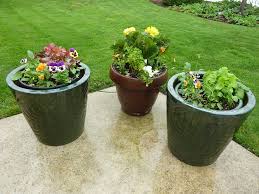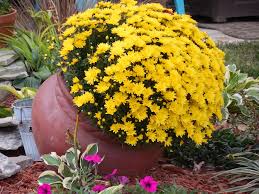Learning about Biennials and Their Care
We will be looking at biennials in this article and how we can use them around our home gardens. Biennials are flowering plants that spend their first year putting forth leaves, stems, and roots. Then they go through a period of overwintering or they go into a dormant state, the second year these plants put forth or produce flowers. Like annuals and perennials, biennials can also give us our share of colors that we can add to our garden and landscapes.

Make sure to learn as much as possible about your plants to get full use of them. Read instructions and follow carefully or you can ask your nurseryman.
Here are a few names of biennials that will really brighten up your garden area.
1. Foxgloves
2. Forget me not
3. Sweet William
4. Hollyhock
These are just a few of the many that you can choose from. So let your mind go and let those creative juices flow as you add color to your garden landscape.
Care of biennials
Good garden soil is a must if you want these plants to perform at their best, do not plant too deeply. The planting hole should be a little wider than the plant root ball. Remember only the root ball should be in the hole the base of the trunk should be above ground.
Watering method
Make sure and give your plants enough water, water according to instructions for your specific plants. Every plant does not have the same watering requirements. You may have to water more often in the summer. Be careful not to overwater because this can lead to root rot. To know more about watering procedures you can read the article on how to water found under the section of perennial plants.
Fertilizing your biennials

Fertilizers can help your plant go a long way in its overall performance. To know more about fertilizing check out the section on fertilizers.
Mulching
Adding 1-3 inches of mulch can give that professional look, keep the soil cool, keep down weeds, and add nutrients to the soil as it decomposes over time. Your plant can then take up nutrients by its roots.
So grab a shovel and let’s start planting those biennials.
About the author
Norman loves being in the garden, both at home and for his job....
he is 'Natures Little helper' being outdoors, growing his vegetables and flowers from an early age.
Now having spent over 22 years in the profession he want to give some of his knowledge to others...
his vast array of hints and tips you will find scattered over this site will help you no end growing plants in your garden.

I notice that the names of Biennials are interesting, particularly ‘Forget me not’. It’s like a name of a song.
I don’t know so much about plants but I’m drawn with the facts and information here. I mean, what would happen during winter or summer for instance.
About this post, the one thing that fascinates me is the term ‘mulching’.
Never heard of it, but I see there’s a lot of good things about it such as making the plant look attractive.
I like this article. I do have a question, though. Are biennials like annuals or like perennials? Do they just bloom once and die or do they return year after year.
All the pictures posted depict flowers that it seems like anyone would be proud to grow in a garden.
You may want to establish an email list. This looks like the kind of thing that people who have an interest would appreciate having delivered to their inbox.
Good evening Jeff thanks for the follow and those very kind words, annuals are plants that completes its life cycle during its bloom period with in the same year. Perennials are plants that grows from year to year, however biennials are flowering plants that takes two years to complete its lifecycle, in the first year the plant produces roots, stems and leaves. The second year the plants produces flower and seeds, after this the plant dies. I hopes this helps again thanks a million.